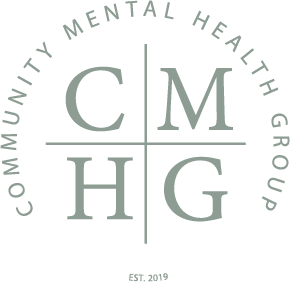Mental Health in the LGBTQQIP2SAA+ Community
Happy Pride Month everyone! For Pride this month, I am going to discuss mental health in the LGBTQQIP2SAA+ community. Members of the LGBTQ+ community are at an increased risk of experiencing mental health issues. According to the National Alliance on Mental Illness (NAMI), LGB adults are more than twice as likely as heterosexual counterparts to experience a mental health condition, and transgender individuals are almost four times as likely as cisgender individuals to experience a mental health condition (2021). In addition, “LGB youth are more than twice as likely to report experiencing persistent feelings of sadness or hopelessness than their heterosexual peers,” and, “transgender youth… are twice as likely to experience depressive symptoms, seriously consider suicide, and attempt suicide compared to cisgender lesbian, gay, bisexual, queer and questioning youth” (NAMI, 2021, para. 4). There are several risk factors that contribute to the prevalence of mental health issues in the LGBTQ+ community, including minority stress, bigotry, trauma, and rejection.
Minority stress refers to the additional stress that members of marginalized groups experience because of stigma, prejudice, and discrimination, which can cause mental health problems. Minority stress and bigotry go hand-in-hand, as it is the experiences of bigotry that lead individuals in the LGBTQ+ community to experience minority stress. This stress can be further compounded for people of color who are part of the LGBTQ+ community and experience bigotry and racism. Encounters with bigotry and racism can often be traumatic as well, and though not all traumatic experiences lead to PTSD, the events can still be impactful. Individuals in the LGBTQ+ community are at an increased risk of experiencing traumatic events, such as hate crimes, intimate partner violence, inadequate or lack of access to healthcare resources, family disconnection/abandonment, child sexual abuse, and historical traumas (e.g., the Orlando Pulse Nightclub massacre, the murder of Mathew Shepherd; Ellis, n.d.). Moreover, individuals in the LGBTQ+ community are constantly at risk of experiencing rejection.
Most of us can think of a time when we have been rejected in our lives, and these memories are not usually pleasant. Rejection hurts, and it is not uncommon for individuals in the LGBTQ+ community to experience rejection, including from loved ones, such as family members and close friends. In addition, most people think of coming out as a singular event, but that is far from the truth for many in the LGBTQ+ community. In actuality, coming out can be a continuous, life-long process in which the individual must disclose and explain their identity or identities to others over and over again, always with the fear that they will be rejected.
So how can those in the LGBTQ+ community better manage their mental health when faced with stressors, such as minority stress, bigotry, trauma, and rejection? There are several ways, including seeking professional help or joining a support group; requesting support from the community, trusted friends, or family members; or learning and engaging in self-care. Each of these will be discussed in further detail.
Seeking Professional Help
If you are part of the LGBTQ+ and you are struggling with your mental health, consider seeking help from a mental health professional, such as a psychiatrist, psychologist, therapist, or life coach. There are many mental health professionals who are competent in or specialize in working with individuals in the LGBTQ+ community. In addition, several mental health practitioners are part of the LGBTQ+ community and openly state their identities in their profiles. Psychology Today allows users to search for therapists according to their specialties.
Join a Support Group
Check out your local LGBTQ+ community center for available support groups, or do a quick online search to see if there are any virtual LGBTQ+ support groups that you feel are a good fit for you. To start, ask your therapist for LGBTQ+ specific support groups; look on social media sites, such as Facebook; or check out HRC, The Tribe, or QueerDoc.
Seek Support from the Friends, Family, or the Community
If you have particularly supportive friends or family members who are willing to lend an ear when you are feeling emotionally overwhelmed or you have experienced a stressful event, don’t be afraid to reach out to them for help. If, however, you do not currently have trusted friends and family members to whom you can turn, then consider checking out your local LGBTQ+ community centers or engage with the community online through social media sites or even friendship apps, like Bumble BFF, Friender, Hey! VINA, Meetup or even Nextdoor, to make some friends who are in the community.
Practice Self-care
Having the proper mental and emotional support in your life can make a huge difference, but don’t forget that you need to take care of you too. I have encountered several clients who devote all of their time and energy to caring for others and making sure everyone around them is doing well, to the detriment of their own self-care. Self-care is not a luxury, it is a vital process of rejuvenation that prioritizes your mental health so that you can be supportive to those around you. Self-care can entail whatever makes you feel revitalized, for example, reading, creative writing, journaling, meditating, coloring, exercising, walking, going to the park or the beach.
With the increased risk for mental health struggles that individuals in the LGBTQ+ community face, remember that it’s okay to ask for help when you need it, and a little self-care goes a long way.
References
Ellis, A. E. (n.d.). Trauma and posttraumatic stress disorder in lesbian, gay, bisexual,
transgender, and queer individuals. American Psychological Association, Division 56.
National Alliance on Mental Illness (2021). LGBTQI. https://www.nami.org/Your-Journey/
Identity-and-Cultural-Dimensions/LGBTQI
